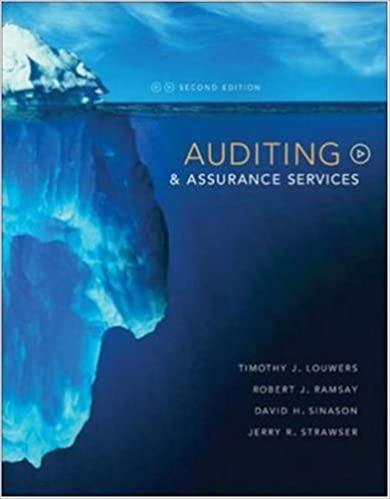Question
Problem Two: Ignore GST. Assume annual accounting periods ending on June 30. On January 1, 2014, Malkin Ltd bought a building for $3,000,000; its useful
Problem Two:
Ignore GST. Assume annual accounting periods ending on June 30. On January 1, 2014, Malkin Ltd bought a building for $3,000,000; its useful life was 30 years, its residual value nil, and the straight-line method would be used for depreciation. The cost model was adopted. On June 30, 2016, Malkin Ltd decided to adopt the revaluation model for its building.
Required:
Calculate the book values of the building on June 30, 2014, June 30, 2015, and June 30, 2016 (prior to the revaluation).
On June 30, 2016, the building was determined to have a fair value of $3,100,000. Prepare journal entries to revalue the building. Prepare the closing entry related to the revaluation.
Prepare the depreciation entry for June 30, 2017, assuming the useful life has increased to 40 years for the financial year ending June 30, 2017 going forward.
On June 30, 2017 the building was determined to have a fair value of $2,500,000. Prepare the journal entry to revalue the building. (Hint: Do not ignore b) and c) above.) Also prepare the applicable closing entries for the revaluation only.
Assume that when the balance in Accumulated Depreciation was $360,000 and up to date, and the balance in building was $2,900,000, the building was sold for $3,000,000. The purchaser paid with a $2,000,000 two year promissory note (9% rate) and cash for the balance.
Prepare the journal entry for the disposal.
Assuming you recognised a gain, where in the SOCI should this gain appear? Explain why. Would your answer change if you recognised a loss?
Step by Step Solution
There are 3 Steps involved in it
Step: 1

Get Instant Access to Expert-Tailored Solutions
See step-by-step solutions with expert insights and AI powered tools for academic success
Step: 2

Step: 3

Ace Your Homework with AI
Get the answers you need in no time with our AI-driven, step-by-step assistance
Get Started


